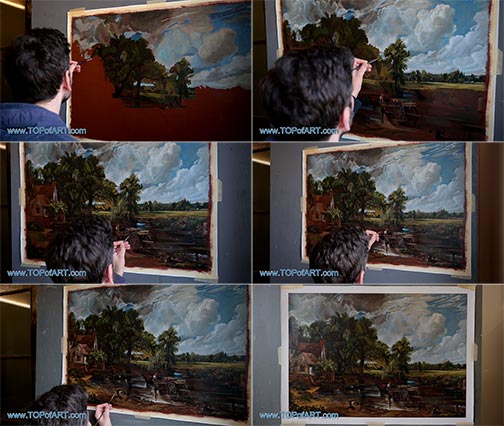The Hay Wain, 1821 John Constable (1776-1837)
Location: National Gallery London UKOriginal Size: 130.2 x 185.4 cm
Own a museum-quality reproduction of The Hay Wain by Constable (1821), exclusively hand-painted in oils on linen canvas by European artists with academic training. Each masterpiece is created with meticulous craftsmanship, capturing the exceptional quality and authentic brushwork of the original painting.
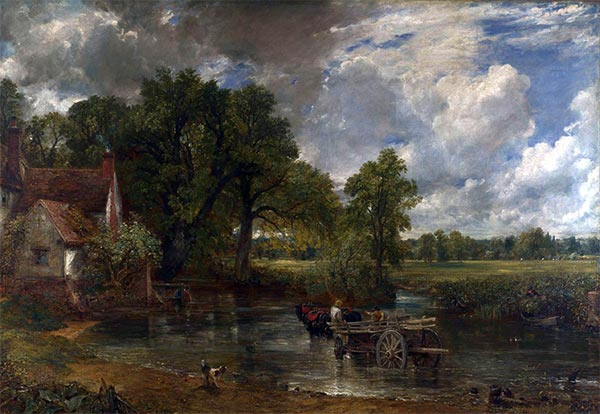
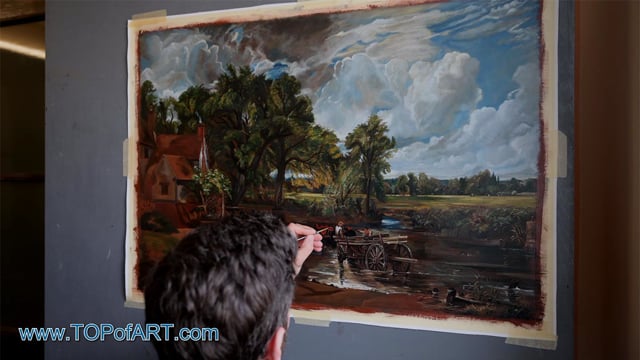 The Hay Wain - Video
The Hay Wain - Video
A Glimpse into Our Studio: Creating Museum-Quality Oil Painting Reproductions
Watch a video showcasing the creation of a hand-painted reproduction of The Hay Wain by Constable in our TOPofART studio. Witness the step-by-step process as our artists bring this masterpiece to life.
Oil Painting Reproduction
If you want a different size than the offered
Description
Painted by European Аrtists with Academic Education
Museum Quality
+ 4 cm (1.6") Margins for Stretching
Creation Time: 8-9 Weeks
Creation Process
We create our paintings with museum quality and covering the highest academic standards. Once we get your order, it will be entirely hand-painted with oil on canvas. All the materials we use are the highest level, being totally artist graded painting materials and linen canvas.
We will add 1.6" (4 cm) additional blank canvas all over the painting for stretching.
High quality and detailing in every inch are time consuming. The reproduction of John Constable also needs time to dry in order to be completely ready for shipping, as this is crucial to not be damaged during transportation.
Based on the size, level of detail and complexity we need 8-9 weeks to complete the process.
In case the delivery date needs to be extended in time, or we are overloaded with requests, there will be an email sent to you sharing the new timelines of production and delivery.
TOPofART wants to remind you to keep patient, in order to get you the highest quality, being our mission to fulfill your expectations.
We not stretch and frame our oil paintings due to several reasons:
Painting reproduction is a high quality expensive product, which we cannot risk to damage by sending it being stretched.
Also, there are postal restrictions, regarding the size of the shipment.
Additionally, due to the dimensions of the stretched canvas, the shipment price may exceed the price of the product itself.
You can stretch and frame your painting in your local frame-shop.
Delivery
Once the painting The Hay Wain is ready and dry, it will be shipped to your delivery address. The canvas will be rolled-up in a secure postal tube.
We offer free shipping as well as paid express transportation services.
After adding your artwork to the shopping cart, you will be able to check the delivery price using the Estimate Shipping and Tax tool.
Museum Quality
The paintings we create are only of museum quality. Our academy graduated artists will never allow a compromise in the quality and detail of the ordered painting. TOPofART do not work, and will never allow ourselves to work with low quality studios from the Far East. We are based in Europe, and quality is our highest priority.
Additional Information
In terms of color, the painting relies predominantly on earth tones and deep greens, interspersed with muted reds that appear in the farmhouse walls, chimneys, and the decorative fringes on the horses’ collars. These hints of red inject warmth into the predominantly cool palette. Above, the sky appears unsettled - expansive clouds, tinged with grays, loom in the distance, indicating a transient weather pattern characteristic of the English countryside. The subtlety of Constable’s tonal shifts underscores the authenticity of the vista. One senses that he favored careful observation of real atmospheric conditions - a dedication to nature that conveys moisture in the air and a tangible weight in the sky. The resulting interplay of light and shadow bathes the hay wain and the figures in a soft, diffused glow, amplifying the scene’s quiet introspection.
Constable’s technique, as seen here, marries a devotion to naturalism with an evident looseness of brushwork that enlivens the foliage and sky. Although The Hay Wain was largely composed in his London studio, he drew on numerous oil sketches made in the open air around Flatford. Even in the larger finished canvas, one can detect the fluidity of his strokes, especially among the leaves of the overarching trees. The paint handling hints at layering: thin, semi-translucent glazes overlap more solidly worked passages, capturing the interplay of sunlight as it filters through the canopy. This balancing act between careful draftsmanship and impressionistic touches is one reason the picture retains its immediacy, despite its considerable scale.
Compositionally, the painting achieves an equilibrium by placing major focal points at strategic intervals. The dark cluster of trees anchors the center, while the calm millpond stretches outward, mirroring the shapes above. The farmhouse on the left and the small boat on the right create a dialogue that frames the wagon’s crossing in the middle ground. Meanwhile, the open field beyond draws the viewer’s gaze deeper into the distance. This arrangement directs attention methodically from foreground to background, inviting a lingering study of each element. It also echoes an earlier Flemish and Dutch tradition of depicting rustic life with authenticity rather than idealization. Constable’s admiration for artists like Rubens and Jan van Goyen resonates here, evident in the cart-fording motif and the expansive sky, though he ultimately pursued his own vision born from meticulous study of Suffolk’s landscape.
Historically, The Hay Wain stands as the third in a series of large Stour landscapes exhibited by Constable at the Royal Academy between 1819 and 1825. Shown to the public in 1821 (then called “Landscape: Noon”), it arrived during a period of rapid industrial change. Steam power and factories were altering rural livelihoods, but Constable’s work remains a portrayal of a pre-industrial idyll, focusing instead on the agrarian tasks and pastoral rhythms he had known in his youth. Although the painting did not sell initially, it later found acclaim in Paris, where it was viewed by influential figures such as Géricault. Its warm reception abroad led to Constable receiving a gold medal from Charles X, contributing to his growing reputation as a painter who captured the genuine character of the English countryside.
Beyond its immediate surface, the painting evokes a sense of continuity. Flatford Mill, just out of sight, was a site intimately associated with the artist’s family history. The modest building on the left - Willy Lott’s house - still stands today, a survivor of centuries and a testament to Constable’s attachment to place. That personal connection is further strengthened by the sketches and studies he made over many years, gradually culminating in this quietly monumental scene. In the end, the gentle crossing of the wagon underscores how Constable chose to celebrate the passage of ordinary moments, immortalizing the delicate balance of people, animals, and land within the fleeting hush of a Suffolk summer day. The result is an immersive image, one that merges careful observation with a poetic sensitivity to nature’s enduring power.
2 Reviews
5.00 Overall rating
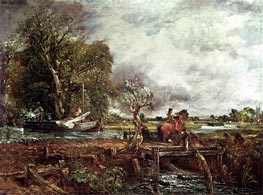
The Leaping Horse 1825
$1608
$69.76
John Constable
Original Size:142 x 187.3 cm
Royal Academy of Arts, London, UK
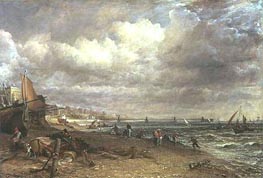
Marine Parade and Chain Pier, Brighton c.1826/27
$1663
John Constable
Original Size:127 x 183 cm
Tate Gallery, London, UK
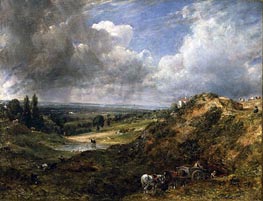
Hampstead Heath, Branch Hill Pond 1828
$1441
$71.98
John Constable
Original Size:59.6 x 77.6 cm
Victoria and Albert Museum, London, UK
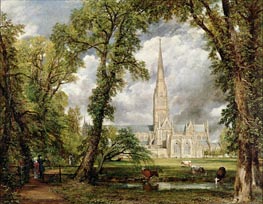
View of Salisbury Cathedral from the Bishop's Grounds c.1822
$1925
$72.83
John Constable
Original Size:87.6 x 111.8 cm
Victoria and Albert Museum, London, UK
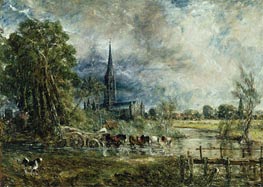
Salisbury Cathedral from the Meadows (Fording the River - Showery Weather) c.1829/31
$1629
John Constable
Original Size:135 x 188 cm
Guildhall Art Gallery, London, UK
